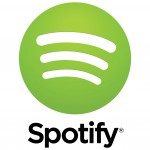For Christmas, Ashley gave me a Premium subscription to Spotify (the “all you can eat” music subscription service). I’ve been really impressed with the quality of the music, the selection, and the mobile application’s capabilities. It’s a whole different world when you can access the majority of humankind’s music at the touch of a button. Finally, someone has figured out how to make people stop pirating material: publish it all, publish it now, and publish it at a reasonable price that nullifies most people’s reasons for pirating music online.
That said, there are still a few features I would like to see added to the product to really make it shine. While Spotify does have capabilities for developers to build applications on top of Spotify, the current selection of applications are a bit weak. In many cases, they’re almost purely marketing ploys for various brands. Here’s some suggestions for apps that Spotify should either build themselves or encourage others to build.
Shazam Integration: Audio Discovery + “Bookmarking”
Shazam was a savior for me for a long time – nothing like being able to have a definitive answer to the question “what song is that they’re playing in this movie/theatre/coffee shop right now?”. However, using Shazam with Spotify is currently a multi-step process: open Shazam, tag the song to determine the song and artist, then switch to Spotify, search for the same song/artist, and add to a playlist for future listening.
Instead, as a user I want to be able to pull out my phone, start Spotify, and hit a button to determine the song and add it to a list for future listening. Think of it as the equivalent of Instapaper or Pocket, but for music instead of articles on the web. I should be able to use Spotify as a way of collecting interesting songs, wherever I hear them, and then queuing them for future listening.
Nike+ Integration: The Perfect Running Playlist Generator
When I go running, the music being played has a noticeable impact on my pacing. I regularly use the Nike+ running application my iPhone to play a running playlist, but the only music playback options are to play a pre-existing playlist in either a linear or “shuffled” order. My options to are either to spend a bunch of time building playlists, or to have a sub-par performance when a cool-down song comes on when I’m right in the middle of my run.
As a user, what I want is a way to have Spotify automatically generate a running playlist, based on the artists I follow or a radio station I’ve created. As an input to the process, the application should ask me about how far I intend to run or for what period of time. These inputs could be used to drive the selection of songs whose tempo match my target running pace, resulting in a subconscious signal to me to speed up or slow down my running pace. This playlist should be linked to the Nike+ running application, so that I can trigger this feature as the playlist for my run.
Life Soundtrack: Location/Context-Aware Radio
Often when I travel, I create a playlist to match the destination. Whether it’s a roadtrip where I’ll be driving to a destination or wandering around a strange city, I like to have music that I associate with a place. For example, nothing beats bursting through the doors of Healthrow Airport with The Clash’s “London Calling” at eleven, or strolling past the British Houses of Parliament with The Beatles’ “Tax Man” reminding you of one of life’s unavoidable certainties.
What I’d like to be able to do is have Spotify generate a playlist for me on the fly, based on my location. This playlist would select songs and artists that have a connection to my current context, including inputs like my physical location, the time of year, and my speed of travel. Combining that information with data about artists (where they were born, lived, performed) and songs (lyrical context, references to the current location, place where the song was written) would allow Spotify to construct a nuanced playlist that reflected my current surroundings, and provided a perfect backdrop to life.

